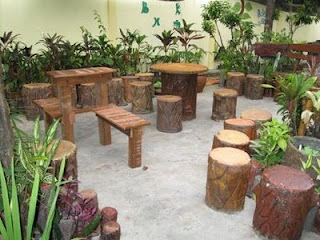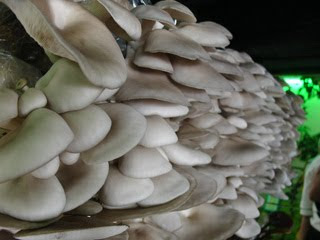Watermelon (Citrullus Iunatus Schard) also known as Melikai, Chinese cucumber or watermelon. It is a tropical fruit believed to have originated in tropical Africa. melon is usually eaten fresh or processed into a drink (juice) and seeds are made Kuaci. The popular variety is the New Dragon (red fill), Yellow Baby (fill in yellow), Fengshan and Quality (without seeds).
Climate
Watermelon plants need warm weather for growth and good yield. Temperatures between 25°C - 35°C during the day and 18°C - 22°C at night and at least 380mm of rain a year is needed.
Land
Sandy soil and sandy loam soil that is not stagnant water are ideal for growing melons. suitable pH was between 4.6 - 7.0, land which had previously planted watermelons and other crops from the family cucurbitaceace (such as pumpkin, petola, cucumber melon no longer encouraged to be planted with watermelon plants for 3 years. This is to prevent infectious diseases of land.
CultivationThere are two ways for the cultivation of watermelon is planted directly into the field or sowing the first seeds in small plastic bags which are called sheaves.
Plant System SummaryThis system is practiced in a wide area of more than 3 hectares. This seed needs is between 250-350gram per hectare. Seeds are soaked for 12 hours and in the mix with a fungicide (such as thiram at a rate of 3 grams of seed 1000gram). Then it was wrapped in a damp cloth so that the seeds and roots kembag first appeared keladang then planted at a rate of 3-4 seeds per hole.
Nursery system (hoist)
Mixture of soil and poultry manure at the rate of 3:1 is prepared and filled into small plastic bags (crane). Two or three seeds sown in each pulley. Two or three seeds sown in each pulley. Crane-hoist is placed nursery revealed a 50% coverage and watered two times a day. If no cover, after the watered-crane hoist should be covered with black plastic until the seeds germinate.
Plant
Land that has been plowed, dug a hole measuring 30cm X 30cm X 30cm with a distance of 2.0 X2.5m plants. This gives the 2000 holes per hectare for the sandy soil. Land that has more content, such as soil clay minerals requires a larger hole and the other. Before the change, the children watered the seed and planting holes, of 1.0-1.5kg, dry poultry manure, and one teaspoon (6-8gram) as an insecticide (Carbofuran) placed in the hole and mix with the soil. Each hole was planted with two seedlings . Ideally, the planting is designed to start at the end of the rainy season.
CARE
Mulching
Mulch made immediately after the seed changed to the field. It seeks to maintain soil moisture and help control weeds. Among the materials that can be used is grass, weeds, dry straw, old newspapers and plastic-coated aluminum.
Pruning
Potatoes should be cut watermelon plants at the sixth or seventh segment of the plant between the ages of 10-15 days. This can guarantee. This ensures that the plant grows more supple and provide a more uniform fruit.
Watermelon plants need plenty of water for good plant growth and fruit enlargement of the maximum. Water needs are critical to early planting (10 days first), the flowering stage (30-40 HST) days after planting and during the growing fruit (40-45 HST). Irrigation system that is used depends on the soil.The determination of the adequacy of the water can be tested by grasping the land, if land is not broken, this indicates that water is sufficient.
WOODS
Maturity Determination
Watermelon maturity is determined based on the following characteristics:
1. Of age (the age factor to the variety and the planting season. Planting in summer causes fruit matures earlier).
2. Color tendrils and leaves of fruit: (colored tendrils of green to yellow and dry. Tendrils of dried fruit is too ripe mark).
3. The skin is in contact with the ground: (color white before maturity and turns yellow when ripe).
4. Flick fruit (ripe fruit, such as a hollow ring. The fruit is not ripe compact and high-pitched sounds).
5. Veins on the path: (For striped watermelons, veins on the path to break the color lines fade when the ripe fruit).
6. To flash pods (fruits can be harvested when the skin becomes pale or less shiny. At this stage the sugar content reaches a maximum).
How to Harvest
The fruit is harvested by cutting the fruit stalks using a knife cut. Never pull or twist the quotes as this will cause injury to the fruit and the ease of infection and makes the fruit rot disease.
| Post Harvest HandlingFruits were harvested, collected in the shade, sorted according to size, shape and variety previously compiled into the baskets of bamboo or rattan. He then loaded into a covered vehicle for transportation to the destination of sales. |


















